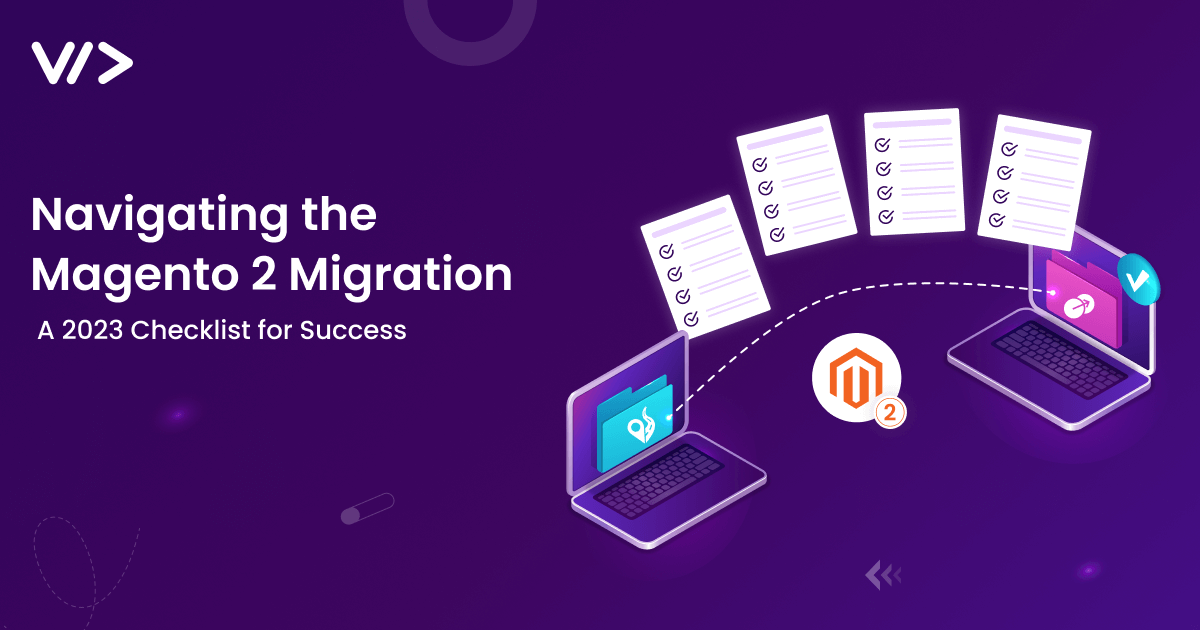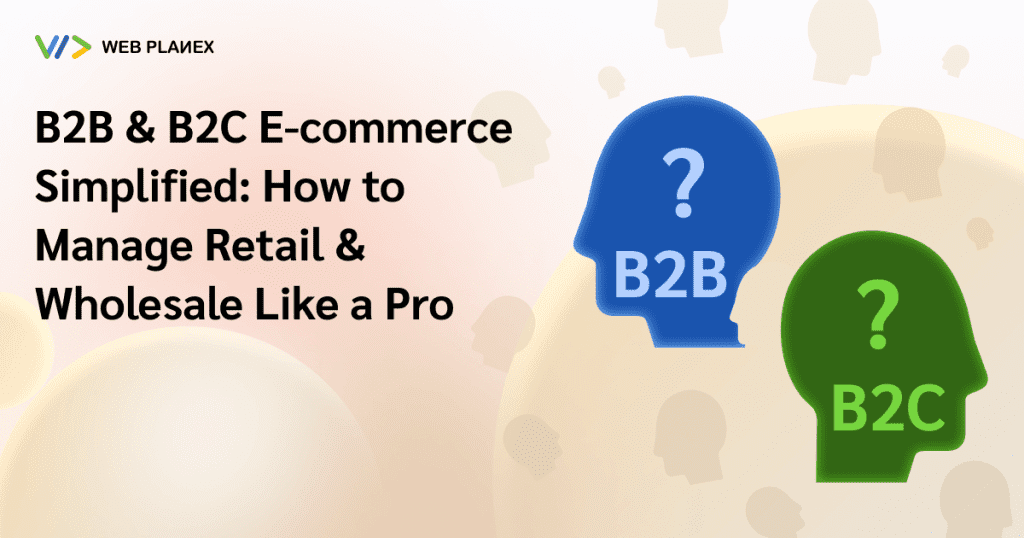
Magento officially ended support for Magento 1 in 2020, leaving many store owners uncertain about their next steps due to the complexities involved in migrating to Magento 2. If you find yourself in this situation, rest assured that Magento 2 offers remarkable features absent from its predecessor. We guarantee that the migration will be a decision you won’t regret. So, without delay, we present a comprehensive guide to help you understand the Magento Data Migration tool and ensure a smooth transition to Magento 2, setting the stage for a successful e-commerce platform.
Difference between Magento 1 and Magento 2
Magento 1 and Magento 2 are both e-commerce platforms, but they have significant differences in terms of architecture, features, performance, and support. Below, I’ll highlight some key differences between Magento 1 and Magento 2:
Architecture:
Magento 1 uses a monolithic architecture, which means that the core codebase contains all the functionality. Customizations often involve modifying core files, which can lead to compatibility and upgrade issues.
Magento 2 adopts a modular architecture, which allows for better customization and extension without modifying the core code. Modules can be added or removed easily, making it more flexible and maintainable.
Performance:
Magento 1 can be resource-intensive and may suffer from slower page load times, especially when handling a large number of products and customers.
Magento 2 is optimised for performance with various improvements, including full-page caching, minimised JavaScript, and improved database efficiency. It generally offers faster page loading times.
Admin Interface:
The admin interface in Magento 1 can be complex and less user-friendly. It may require a learning curve for new users.
Magento 2 features a more intuitive and user-friendly admin panel with improved navigation and a better organisation of settings and features.
Mobile Responsiveness:
Mobile responsiveness was limited in Magento 1, and additional work was often required to make the store mobile-friendly.
Magento 2 includes responsive design themes and provides a better mobile shopping experience out of the box.
Security:
Magento 1 has had security vulnerabilities, and keeping the platform secure often requires third-party security extensions and regular updates.
Magento 2 was designed with improved security in mind, and it receives regular security updates to address vulnerabilities.
Checkout Process:
The default checkout process in Magento 1 was multi-step and somewhat cumbersome, potentially leading to higher cart abandonment rates.
Magento 2 offers a streamlined, faster, and more user-friendly checkout process such as one step checkout, reducing cart abandonment rates.
Extension Availability:
While Magento 1 had a wide range of extensions available, some extensions were not as well maintained or updated.
The Magento 2 ecosystem offers a growing number of extensions, many of which are built with the latest technologies and compatibility in mind.
Support and Updates:
Official support and updates for Magento 1 were discontinued in June 2020, which means no more security patches or official support.
Magento 2 is actively supported by Adobe (the parent company of Magento) and continues to receive updates, including security patches and new features.
Cost:
The Community Edition of Magento 1 was free, while the Enterprise Edition required a licence fee.
Both the open-source Community Edition (now referred to as Magento Open Source) and the Enterprise Edition (Adobe Commerce) are available. The cost varies depending on the edition and your business needs.
Why choose Magento 2 over Magento 1?
There are several compelling reasons to choose Magento 2 over Magento 1 for your e-commerce platform:
Performance Improvement:
Faster Load Times: Magento 2 is optimised for speed and offers significantly faster page load times compared to Magento 1. This speed improvement can lead to lower bounce rates and higher conversion rates.
Mobile Responsiveness:
Responsive Design: Magento 2 comes with responsive design themes out of the box, making your website mobile-friendly and providing a seamless shopping experience on smartphones and tablets.
User Experience:
Streamlined Checkout: Magento 2 offers a more user-friendly and simplified checkout process, reducing cart abandonment rates and improving the overall shopping experience.
Improved Admin Interface: The admin panel in Magento 2 is more intuitive and user-friendly, making it easier for merchants to manage their stores.
Security:
Regular Security Updates: Magento 2 receives regular security updates and patches from Adobe, helping to protect your website and customer data from potential threats. Magento 1, on the other hand, has reached its end of life and no longer receives security updates.
Scalability:
Improved Scalability: Magento 2 is designed to handle high levels of traffic and product catalogue sizes, making it a more scalable solution for growing businesses.
SEO Enhancements:
Built-in SEO Tools: Magento 2 includes built-in SEO features, such as improved URL structure and rich snippets, which can help improve your website’s search engine rankings and visibility.
Advanced Marketing Tools:
Customer Segmentation: Magento 2 offers advanced customer segmentation tools, allowing you to target specific customer groups with personalised marketing campaigns.
Dynamic Product Bundles: You can create dynamic product bundles and promotions in Magento 2, which can boost sales and customer engagement.
Technology Stack:
Compatibility with Modern Technologies: Magento 2 is designed to work with the latest technologies, including PHP 7, HTML 5, and CSS3, which can improve website performance and open up opportunities for innovation.
Extension Availability:
Growing Ecosystem: The Magento 2 ecosystem continues to grow, with a wide range of extensions and themes available to customise and extend your store’s functionality.
Long-Term Support:
Ongoing Support: Adobe, the company behind Magento, provides ongoing support and development for Magento 2, ensuring its long-term viability. Magento 1 has reached its end of life and is no longer supported.
In summary, Magento 2 offers improved performance, mobile responsiveness, user experience, security, scalability, and a wide range of features and tools compared to Magento 1. If you are starting a new e-commerce project or considering an upgrade, Magento 2 is the recommended choice for a robust and future-proof online store.
Process of migrating from Magento 1 to Magento 2
Migrating from Magento 1 to Magento 2 is a complex process that involves data migration, theme migration, extension compatibility checks, and testing to ensure a smooth transition. Here’s a general outline of the steps involved in migrating from Magento 1 to Magento 2:
Evaluate your current setup:
Take stock of your existing Magento 1 store, including the extensions, themes, customizations, and data.
Identify the extensions and custom code that will need to be replaced or upgraded to work with Magento.
Plan your migration:
Develop a migration plan that outlines the scope, timeline, and budget for the project.
Decide on the Magento 2 edition (open source or commerce) that best suits your needs.
Choose a migration method: manual migration or automated migration using migration tools.
Set up a Magento 2 environment:
Install a fresh instance of Magento 2 on your server or hosting environment.
Configure the basic settings and install the necessary extensions or themes compatible with Magento 2.
Data Migration:
Migrate your data, including products, categories, customers, orders, and other relevant information, from Magento 1 to Magento 2.
You can use the official Magento Data Migration Tool to assist with this process.
Test the data migration thoroughly to ensure accuracy.
Theme Migration or Redesign:
If you’re using a custom theme in Magento 1, you’ll need to either migrate it to Magento 2 or choose a new Magento 2 theme.
Redesign and adjust the theme as needed to ensure it is compatible with Magento 2 and provides a responsive design for mobile devices.
Extension Migration or Replacement:
Review all the extensions you were using in Magento 1.
Check if there are Magento 2 versions of these extensions available from the same developers, or find suitable alternatives.
Install and configure the extensions in Magento 2.
Custom Code and Customization:
Review any custom code or customizations that were implemented in your Magento 1 store.
Rewrite or modify custom code to be compatible with Magento 2.
Test and debug custom code thoroughly.
Data Testing and Quality Assurance:
Test all aspects of your Magento 2 store, including data integrity, functionality, and performance.
Conduct user acceptance testing (UAT) to ensure the store meets your business requirements and your customers’ needs.
Training:
Train your staff on how to use the Magento 2 admin panel and any new features or workflows introduced in Magento 2.
Prepare for Launch:
Set up your DNS and server configurations to point to the new Magento 2 store.
Implement any necessary 301 redirects for SEO purposes.
Perform a final data migration to ensure your Magento 2 store has the most up-to-date data.
Create a backup of your Magento 1 store’s database and files for archival purposes.
Go Live:
Switch your domain to point to the new Magento 2 store.
Monitor the store closely for any issues and address them promptly.
Notify customers about the migration and any changes in the store’s functionality or appearance.
Post-Migration Optimisation:
Monitor the performance of your Magento 2 store and make any necessary optimisations.
Continuously update and maintain your Magento 2 store with the latest security patches and updates.
Migrating from Magento 1 to Magento 2 is a significant undertaking, and it’s crucial to plan thoroughly, test rigorously, and consider seeking the assistance of experienced developers or agencies with expertise in Magento migrations to ensure a successful transition.
The Rise of Magento 2: Unveiling Extraordinary Advancements
Extraordinary Architecture:
Magento 2 introduces a cutting-edge modular architecture that empowers businesses with unmatched flexibility and scalability. Its modular design enables seamless customization and extension without compromising stability.
Full Page Caching:
One of Magento 2’s standout features is its robust full-page caching system. This enhancement drastically accelerates page loading times, delivering an unparalleled shopping experience for customers.
Enhanced SEO:
In the realm of search engine optimization (SEO), Magento 2 reigns supreme. Its arsenal of built-in SEO tools, including improved URL structures and rich snippets, bolsters your online presence and search engine rankings.
Multilingual Support:
The globalisation of e-commerce is effortless with Magento 2. It effortlessly supports multiple languages and currencies, ensuring that your business can cater to a global audience with ease.
Payment Gateways:
Magento 2 boasts a comprehensive array of payment gateways, facilitating seamless transactions for customers. From traditional options to the latest digital wallets, it adapts to your customers’ preferred payment methods.
Exceptional Enterprise Features:
Magento 2 is not just an upgrade; it’s a leap into the world of enterprise-level e-commerce. With features like advanced customer segmentation, dynamic product bundles, and automated email marketing campaigns, it empowers businesses to elevate their marketing and sales strategies.
Magento 2 stands at the forefront of the e-commerce revolution, armed with exceptional architecture, caching prowess, SEO mastery, global reach, payment flexibility, and enterprise-grade capabilities. It’s a platform designed to propel businesses into the future of online commerce with unparalleled speed, agility, and success.
Three main types of Magento migrations:
Manual Migration:
Description: Manual migration involves manually transferring data, configurations, themes, and custom code from a Magento 1 store to a Magento 2 store.
When to Use: Manual migration is typically used when a store has complex customizations or unique requirements that cannot be easily automated. It provides maximum control over the migration process.
Advantages: Greater control over the migration process allows for customization and fine-tuning. Ideal for highly customised Magento 1 stores.
Assisted Migration:
Description: Assisted migration combines manual work with some level of automated assistance. It may involve using migration tools or scripts to simplify data transfer while still requiring manual intervention for custom code and complex configurations.
When to Use: Assisted migration is suitable for stores that have a moderate level of customization and complexity but can benefit from automation in data migration.
Advantages: Strikes a balance between control and automation, reducing the manual workload and potential for errors.
Automated Migration:
Description: Automated migration involves using specialised migration tools or services that automate the process of transferring data and configurations from Magento 1 to Magento 2.
When to Use: Automated migration is a good choice for stores with relatively standard configurations and minimal customizations. It offers a faster and more efficient migration process.
Advantages: Speed and efficiency are the primary benefits, making it suitable for stores with straightforward requirements.
Each type of migration has its own set of advantages and considerations. The choice of migration type depends on the complexity of your Magento 1 store, your budget, and the desired level of control over the migration process. In many cases, a combination of these migration types may be used to achieve the best results. It’s important to carefully assess your store’s requirements and consult with experienced developers or migration experts to determine the most appropriate approach for your specific case.
Conclusion
In summary, the 2023 Magento 2 migration checklist serves as a strategic blueprint for businesses transitioning from Magento 1. With a focus on meticulous planning, data migration, theme adaptation, extension evaluation, and rigorous testing, this checklist ensures a seamless move to Magento 2. The process also highlights the importance of performance optimisation, mobile responsiveness, enhanced security, and improved user experiences. Ultimately, this migration presents an opportunity for growth and innovation, equipping businesses with advanced capabilities and a competitive edge in the ever-evolving e-commerce landscape.




